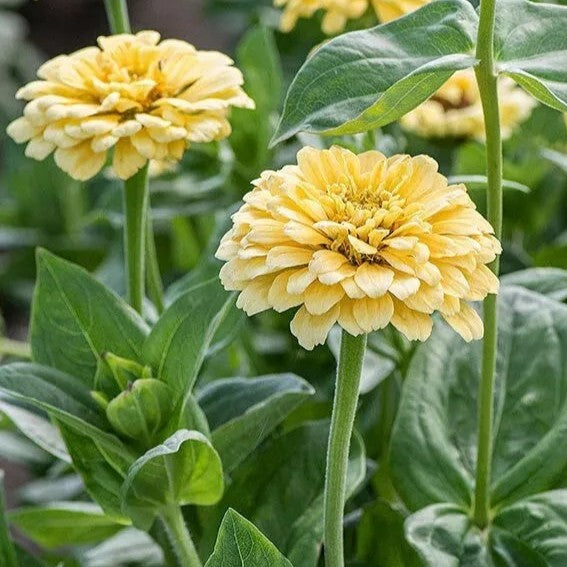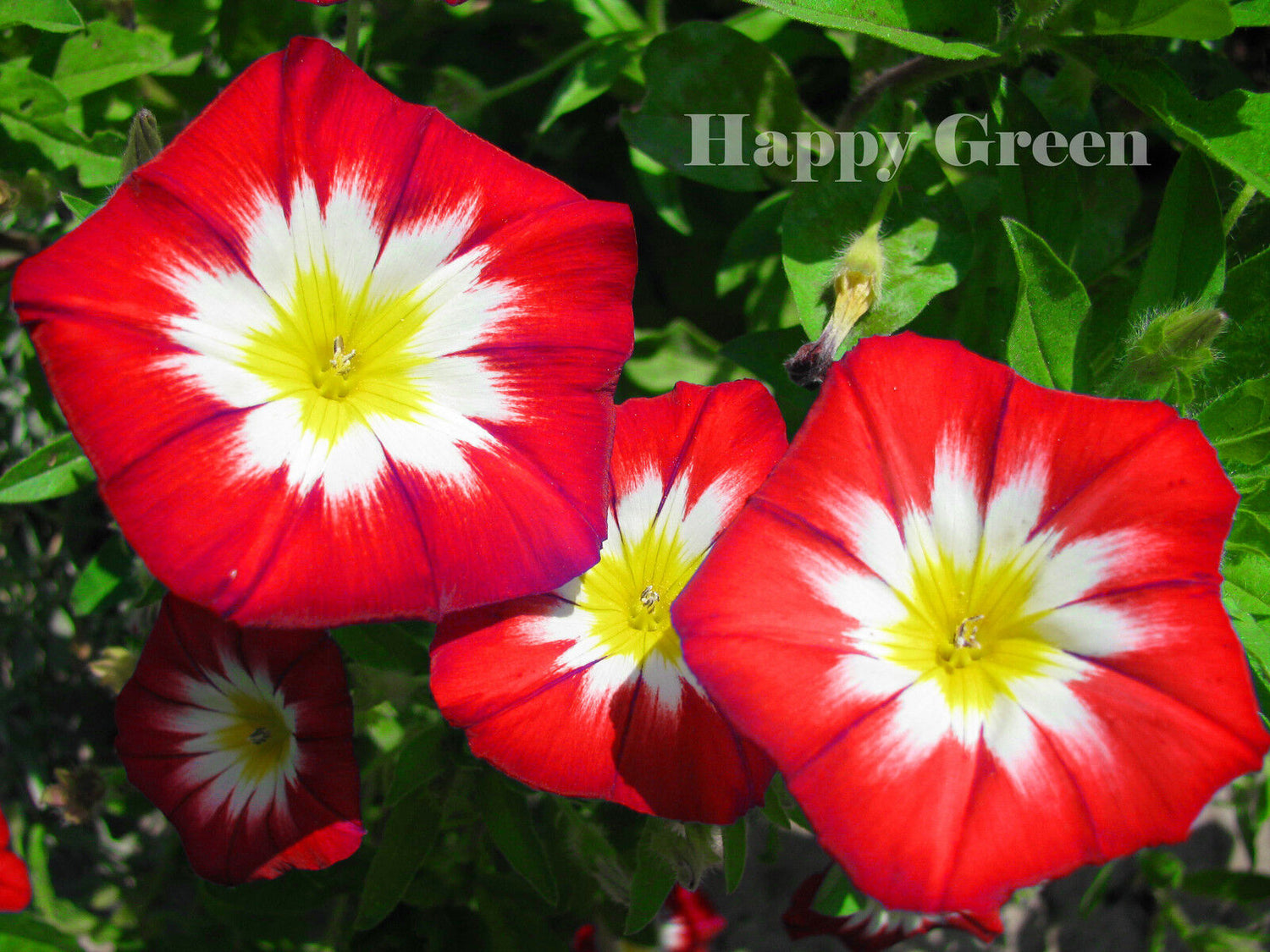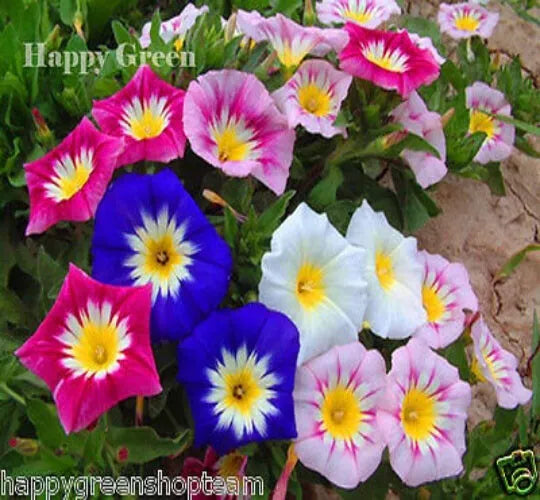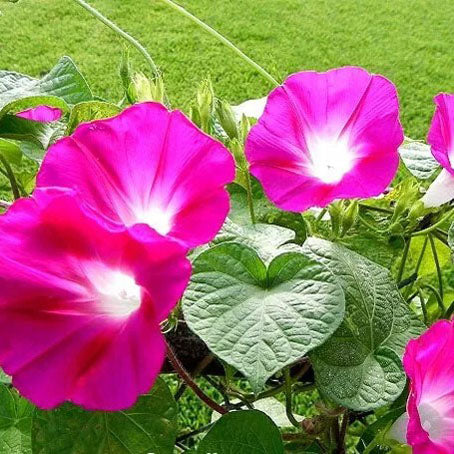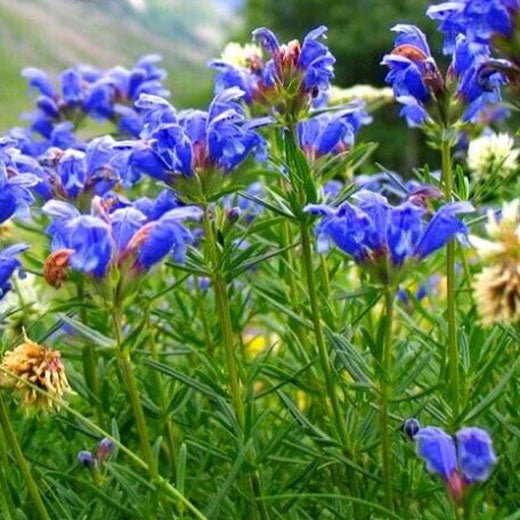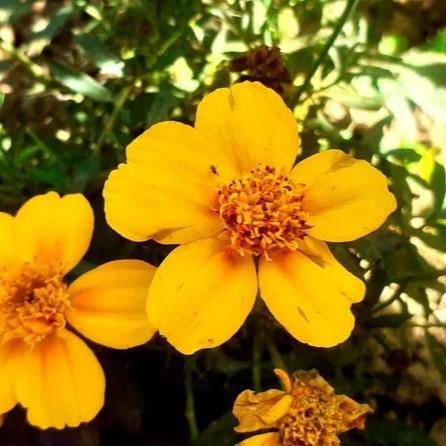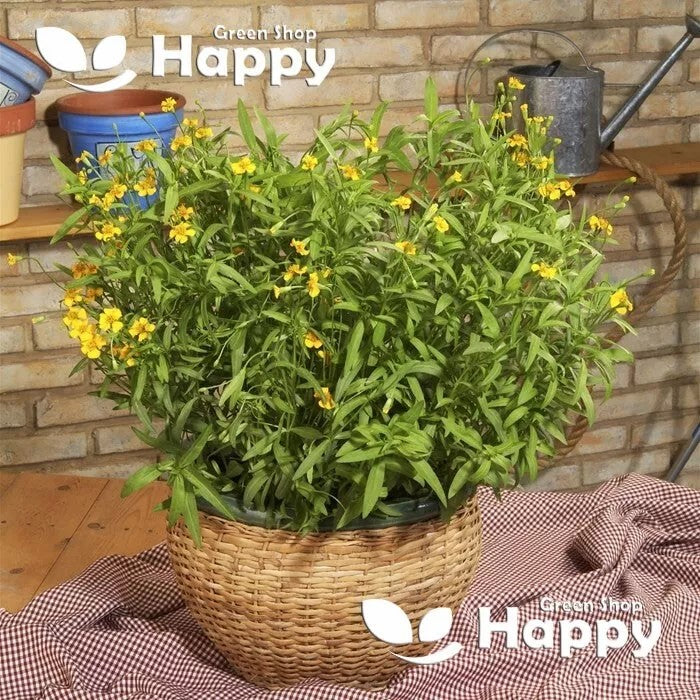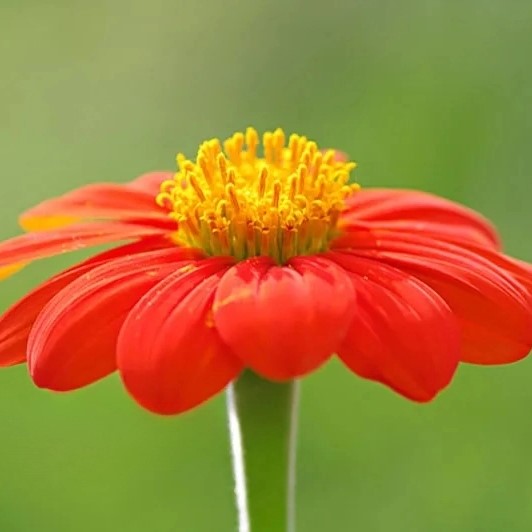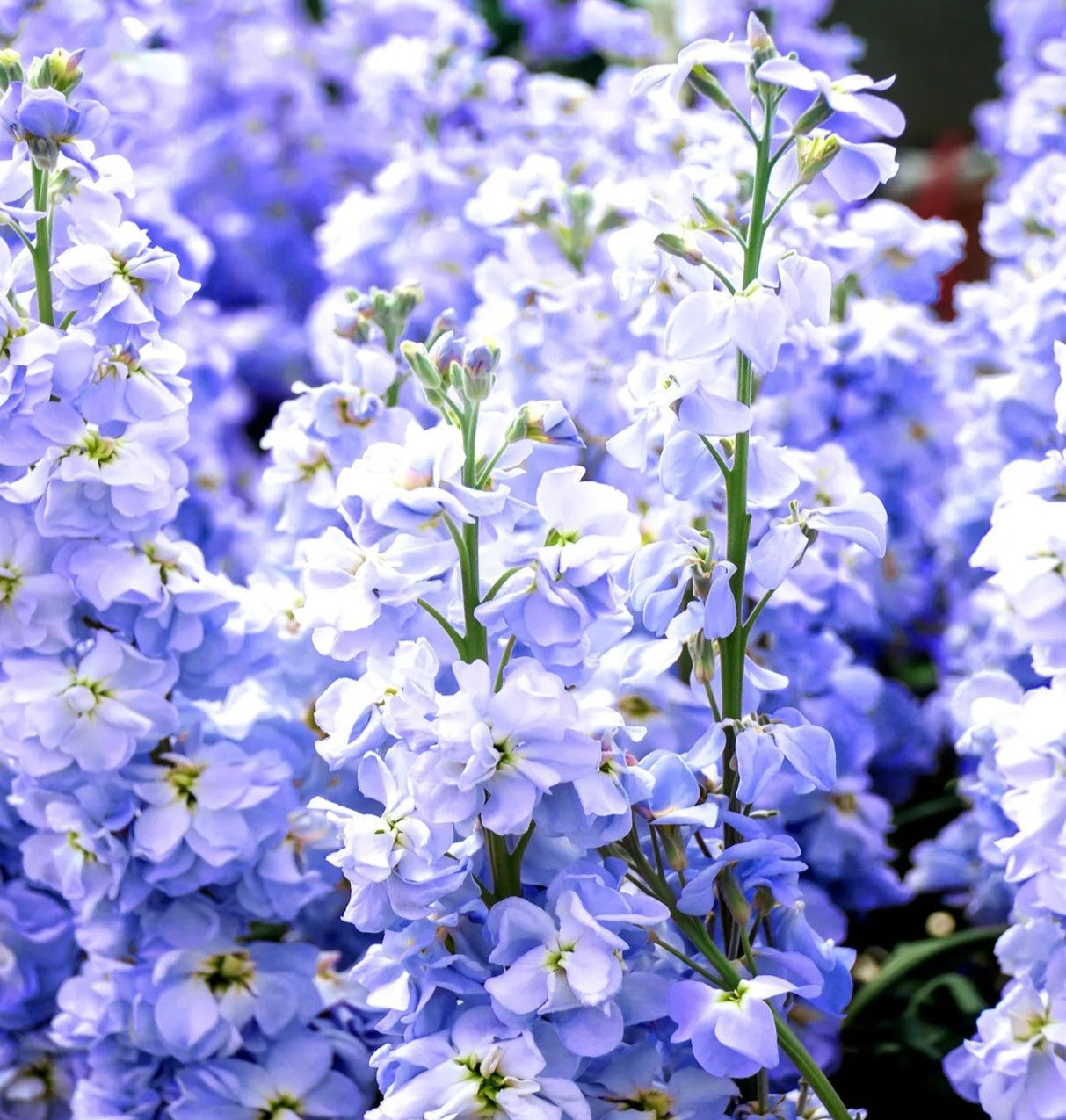Sort by:
287 products
287 products
Morning Glory ‘Ensign Red’ – Seeds (Convolvulus tricolor)
The Morning Glory ‘Ensign Red’ is a stunning dwarf variety of Convolvulus tricolor that produces bright crimson-red trumpet-shaped blooms with golden-yellow throats. Unlike climbing morning glories, this compact type forms neat, bushy plants that flower profusely throughout summer. Its vibrant, bold red flowers bring instant color to beds, borders, and containers.
What Makes It Special
-
Rare red-flowered dwarf morning glory
-
Non-climbing and compact, ideal for small spaces
-
Blooms heavily through summer with minimal care
-
Perfect for creating striking bedding displays
Key Features
-
Botanical name: Convolvulus tricolor
-
Variety: Morning Glory ‘Ensign Red’
-
Seed count: Approx. seeds per pack
-
Height/Spread: 20–30 cm tall, spreading 25 cm
-
Position: Full sun; prefers well-drained soil
-
Flowering period: Summer to early autumn
Ideal For
-
Bedding and border displays
-
Patio pots and window boxes
-
Rock gardens and sunny edges
-
Adding bold red accents to summer gardens
Sowing Instructions
-
When to sow: March–May indoors, or April–June outdoors after frost
-
How to sow:
-
Sow seeds 0.5 cm deep in trays or directly in garden soil
-
Keep soil moist until germination (7–14 days)
-
Needs warmth and sun to thrive
-
-
After germination:
-
Thin seedlings to 20–25 cm spacing
-
Pinch back young growth for bushier plants
-
Morning Glory ‘Ensign’ Mixed – Seeds (Convolvulus tricolor)
The Morning Glory ‘Ensign’ Mixed is a compact, dwarf variety of Convolvulus tricolor that produces a cheerful mix of blue, white, and pink trumpet-shaped blooms with bright yellow centers. Unlike climbing morning glories, this variety forms neat, bushy plants that are ideal for bedding, borders, and containers. Its vivid flowers open in the morning sun and provide an eye-catching display all summer long.
What Makes It Special
-
Compact, non-climbing morning glory variety
-
Striking tricolor blooms in blue, white, and pink with golden centers
-
Long-flowering, hardy, and easy to grow
-
Perfect for containers, borders, and mass planting
Key Features
-
Botanical name: Convolvulus tricolor
-
Variety: Morning Glory ‘Ensign’ Mixed
-
Seed count: Approx. seeds per pack
-
Height/Spread: 20–30 cm tall, spreading 25 cm
-
Position: Full sun; well-drained soil
-
Flowering period: Summer to early autumn
Ideal For
-
Bedding displays and borders
-
Patio containers and window boxes
-
Rock gardens and sunny spots
-
Seasonal pollinator-friendly gardens
Sowing Instructions
-
When to sow: March–May indoors, or April–June outdoors after frost
-
How to sow:
-
Sow seeds 0.5 cm deep in trays or directly into prepared soil
-
Keep soil lightly moist until germination (7–14 days)
-
Prefers warm, sunny conditions
-
-
After germination:
-
Thin seedlings to 20–25 cm apart
-
Pinch tips for bushier growth if desired
-
Morning Glory 'Crimson Rambler' Seeds (Ipomoea purpurea)
Add dramatic vertical color to your garden with Morning Glory 'Crimson Rambler'. This vigorous climber produces abundant, trumpet-shaped, deep crimson flowers that open in the morning and attract pollinators. Ideal for trellises, fences, and pergolas, it creates a stunning, fast-growing floral display all summer long.
Why Grow 'Crimson Rambler'
-
Stunning deep crimson, trumpet-shaped flowers
-
Fast-growing climber, perfect for vertical spaces
-
Attracts bees and butterflies
Key Features
-
Botanical name: Ipomoea purpurea
-
Type: Annual climber
-
Height: 250–300 cm
-
Flowering: Summer
-
Position: Full sun
-
Uses: Trellises, fences, pergolas, decorative screens
Sowing & Growing
-
Sow indoors: March–April in pots or trays
-
Sow outdoors: April–May after last frost
-
Germination: 7–14 days at 18–22°C
-
Provide support for climbing
-
Prefers well-drained soil and full sun
Moldavian Dragonhead – Seeds (Dracocephalum moldavica)
The Moldavian Dragonhead (Dracocephalum moldavica) is a fragrant annual herb admired for its violet-blue flowers and aromatic lemon-scented foliage. Highly attractive to bees and butterflies, it makes a charming addition to herb gardens, borders, and pollinator-friendly spaces. Its leaves are sometimes used for teas with a refreshing citrus flavor.
Why Grow Moldavian Dragonhead?
-
Violet-blue blooms with a pleasant lemon fragrance
-
Excellent for pollinators, especially bees
-
Easy to grow and low maintenance
-
Useful as an ornamental and herbal plant
Ideal For
-
Herb gardens
-
Pollinator-friendly plantings
-
Borders and cottage gardens
-
Aromatic tea lovers
Key Features
-
Type: Annual herb
-
Height: 40–60 cm
-
Spread: 20–30 cm
-
Flowering: June–August
-
Position: Full sun to partial shade
-
Soil: Light, well-drained
Sowing & Growing
-
Sow indoors: March–April, lightly cover seeds
-
Germination: 7–14 days at 18–22°C
-
Transplant outdoors: After frost risk has passed
-
Direct sow outdoors: April–May
-
Spacing: 25–30 cm apart
Tip: Regular deadheading encourages longer flowering and stronger aroma.
Mexican Tarragon – Seeds
(Tagetes lucida) – Perennial Herb / Ornamental
Mexican Tarragon, also known as Sweet Mace or Spanish Tarragon, is a versatile plant prized both as a culinary herb and a decorative flower. It produces bright golden-yellow blossoms and aromatic leaves with a distinctive anise-like flavor, often used as a substitute for French tarragon in cooking. Highly valued in traditional medicine and rituals, it is also a magnet for pollinators like bees and butterflies.
Key Features
-
Type: Tender perennial (often grown as annual in cooler climates)
-
Height: 45–75 cm
-
Spread: 30–40 cm
-
Flowers: Clusters of golden-yellow blooms
-
Blooming period: Summer to autumn
-
Position: Full sun
-
Soil: Well-drained, moderately fertile soil
-
Other: Aromatic foliage; edible herb
Ideal For
-
Herb and kitchen gardens
-
Summer borders and cottage gardens
-
Pollinator-friendly gardens
-
Containers and pots
-
Edible landscaping
Culinary & Herbal Uses
-
Leaves used fresh or dried in soups, sauces, chicken, and fish dishes
-
Herbal teas with calming properties
-
Traditional medicinal and ceremonial uses
Sowing & Growing
-
Sow indoors: February–April in seed trays with light soil.
-
Germination: 7–14 days at 18–22°C.
-
Transplant: Harden off and plant outdoors after the last frost.
-
Care: Prefers sunny, warm positions. Pinch young shoots to encourage bushiness. Harvest leaves before flowering for best flavor.
Mexican Sunflower Scarlet Red Seeds (Tithonia speciosa)
The Mexican Sunflower ‘Scarlet Red’ (Tithonia speciosa) is a bold, heat-loving annual that produces masses of large, daisy-like blooms in brilliant scarlet-red. A true magnet for butterflies, bees, and hummingbirds, this tall and vibrant flower adds fiery color to borders, wildlife gardens, and cutting displays. With its long flowering season and easy care, it thrives in sunny spots and poor soils.
Why Grow Mexican Sunflower ‘Scarlet Red’?
-
Striking scarlet-red blooms up to 8 cm across
-
Loved by pollinators and beneficial insects
-
Tall, branching plants for a dramatic display
-
Thrives in heat, sun, and poor soil
Key Features
-
Botanical name: Tithonia speciosa
-
Type: Half-hardy annual
-
Height: 120–150 cm
-
Spread: 60–75 cm
-
Flowering: July–October
Ideal For
-
Cottage and wildlife gardens
-
Pollinator-friendly plantings
-
Tall borders and backdrops
-
Cut flower arrangements
Sowing & Growing
-
Sow indoors: March–April, 0.5 cm deep in trays or pots
-
Transplant outdoors after frost, spacing 40–50 cm apart
-
Sow outdoors: May, directly where they are to grow
-
Prefers full sun and well-drained soil
Mexican Sunflower Mix – Seeds (Tithonia speciosa)
Mexican Sunflower Mix (Tithonia speciosa) brings bold, fiery blooms in shades of orange, red, and yellow to your garden. Fast-growing and easy to cultivate, these sun-loving annuals attract butterflies and bees, creating a lively and vibrant display throughout summer and autumn. Perfect for borders, wildflower meadows, or pollinator gardens.
Why Grow "Mexican Sunflower Mix"
-
Striking, bright orange-red flowers
-
Long-flowering annual for summer and autumn
-
Attracts butterflies, bees, and other pollinators
-
Easy to grow in sunny, well-drained locations
Key Features
-
Type: Annual (Tithonia speciosa)
-
Height: 90–150 cm
-
Flowering: July–October
-
Position: Full sun
-
Uses: Borders, wildflower gardens, pollinator-friendly plantings, cut flowers
Ideal For
-
Pollinator gardens and wildlife-friendly planting
-
Summer borders and vibrant bedding
-
Wildflower meadows
-
Cut flower arrangements
Sowing & Growing
-
Sow outdoors: April–May after last frost
-
Germination: 10–20 days at 18–22°C
-
Thin seedlings to 50 cm apart
-
Prefers full sun and fertile, well-drained soil
-
Deadhead to prolong flowering
Meadow Sage – Seeds (Salvia pratensis)
Meadow Sage (Salvia pratensis) is a hardy perennial wildflower with elegant spikes of deep violet-blue blooms. Highly attractive to bees, butterflies, and other beneficial insects, it adds natural beauty and biodiversity to any garden. Long-flowering and low-maintenance, this sage is ideal for wild meadows, borders, and pollinator-friendly plantings.
Why Grow Meadow Sage?
-
Striking violet-blue flower spikes
-
Attracts bees, butterflies, and pollinators
-
Hardy, drought-tolerant perennial
-
Low-maintenance and long-lasting
Key Features
-
Type: Perennial
-
Height: 40–70 cm
-
Spread: 30–40 cm
-
Flowering: June–August
-
Position: Full sun
-
Soil: Well-drained, moderately fertile
Ideal For
-
Wildflower meadows
-
Pollinator-friendly gardens
-
Naturalized plantings
-
Sunny borders and cottage gardens
Sowing & Growing
-
Sow indoors: February–April in trays/pots
-
Germination: 14–21 days at 18–20°C
-
Transplant outdoors: After last frost
-
Direct sow outdoors: April–June or September
-
Spacing: 30–40 cm apart
Tip: Cutting back after flowering encourages a second flush of blooms.
Matthiola Stock Ten Week Light Blue – Seeds (Matthiola incana)
Matthiola Stock Ten Week Light Blue (Matthiola incana) is a charming annual known for its elegant spikes of soft, light blue blooms. Flowering just 10 weeks after sowing, this variety combines quick growth with long-lasting beauty. Renowned for its delightful fragrance, it is perfect for borders, beds, and containers, as well as cut flower arrangements. A cottage garden favorite, it brings both color and scent into your summer garden.
Why Grow "Ten Week Light Blue"
-
Soft light blue flower spikes with a sweet fragrance
-
Quick to flower – just 10 weeks from sowing
-
Ideal as cut flowers with long-lasting blooms
-
Compact, easy-to-grow annual
Key Features
-
Type: Half-hardy annual (Matthiola incana)
-
Height: 25–40 cm
-
Flowering: Early to late summer
-
Position: Full sun
-
Uses: Borders, cottage gardens, containers, cut flowers
Ideal For
-
Adding soft pastel color to summer borders
-
Fragrant cottage-style planting
-
Cut flower bouquets and arrangements
-
Quick and rewarding garden displays
Sowing & Growing
-
Sow indoors: February–April in trays or pots
-
Germination: 10–20 days at 15–18°C
-
Transplant outdoors after frost danger has passed
-
Space seedlings: 20–25 cm apart
-
Prefers fertile, well-drained soil in full sun
Showing 153/287




